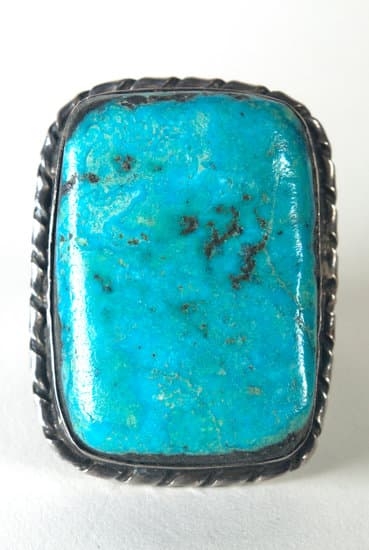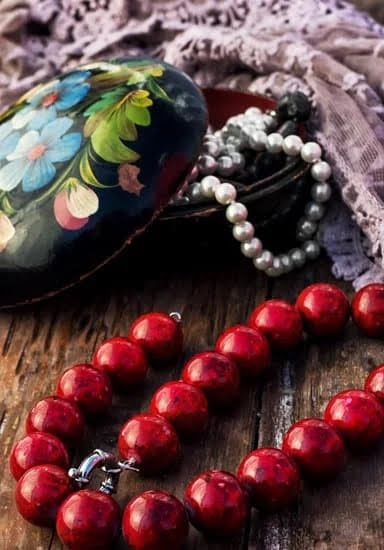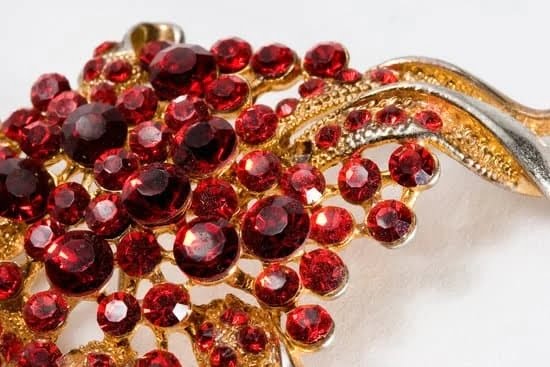Resin beads are a popular choice for jewelry making, offering the versatility to create custom and unique designs. In this article, we will guide you through the process of making resin beads for your own jewelry pieces.
Using resin allows you to customize the color, shape, and design of your beads, resulting in one-of-a-kind creations that reflect your personal style. If you want to learn how to make resin beads for jewelry, then keep reading for a detailed step-by-step guide.
Resin beads are versatile and can be manipulated into various shapes and sizes, making them ideal for creating statement pieces or delicate accessories. With the right materials and a bit of creativity, you can make stunning earrings, necklaces, bracelets, or rings using resin beads.
This introduction will provide an overview of the materials needed and the process involved in preparing and curing resin beads. Whether you’re a beginner or an experienced crafter, making resin beads for jewelry is an exciting and rewarding endeavor that allows you to express your individuality through wearable art.
In the following sections, we will delve into the intricacies of making resin beads for jewelry by discussing the specific materials required, step-by-step instructions on preparing and pouring the resin mixture into molds, creative ideas for embellishing the beads, as well as tips on finishing touches such as sanding and polishing.
By the end of this article, you’ll have all the knowledge you need to create stunning resin beads that can be incorporated into beautiful handmade jewelry pieces.
So let’s get started on this creative journey.
Materials Needed
Resin beads are a popular choice for jewelry making due to their versatility and durability. They can be customized in a variety of colors and shapes, making them perfect for creating unique and eye-catching pieces. In order to make resin beads for jewelry, you will need a few essential materials and tools to get started.
First and foremost, you will need resin. There are different types of resin available, such as epoxy resin or UV resin, each with its own curing process. You will also need molds to shape the resin into beads. These can be found in various sizes and shapes, depending on your desired end product.
In addition to resin and molds, you will also need dyes or pigments to add color to your beads. There are endless options for color combinations, allowing you to create truly one-of-a-kind pieces. Lastly, you will need mixing utensils to properly measure and blend the resin mixture. This can include mixing cups, stirring sticks, and pipettes for adding dyes.
These materials are just the basic necessities for making resin beads for jewelry. However, there are endless possibilities when it comes to embellishing your beads with glitter, dried flowers or metallic foil – it all depends on your creativity.
| Materials | Tools |
|---|---|
| Resin (epoxy or UV) | Molds (various sizes/shapes) |
| Dyes/pigments | Mixing cups/sticks |
| Embellishments (optional) | Pipettes (for dyes) |
Preparing the Resin
Resin beads are a popular choice for jewelry making due to their versatility, durability, and unique appearance. Whether you are a beginner or an experienced crafter, learning how to make resin beads for jewelry is a fun and creative way to personalize your accessories. In this section, we will provide you with a detailed step-by-step guide on preparing the resin mixture, measuring and mixing the resin, and adding any desired dyes or pigments.
To make resin beads for jewelry, you will need the following materials: resin (epoxy or UV), bead molds, coloring agents (dyes or pigments), mixing cups, stirring sticks, and a heat gun or torch for removing air bubbles. Make sure to work in a well-ventilated area and wear gloves to protect your skin from any potential irritants in the resin.
First, measure out equal parts of the resin and hardener according to the manufacturer’s instructions. It is crucial to follow these measurements accurately to ensure that the resin cures properly. Then, pour the resin into a mixing cup and use a stirring stick to blend it thoroughly for at least two minutes. This process helps to minimize bubbles and ensures that the resin sets evenly.
Once the resin is thoroughly mixed, you can add dyes or pigments if desired. Start with a small amount of coloring agent and gradually increase until you achieve your desired color. It’s important not to add too much dye as it can affect the curing process of the resin. Mix the dye into the resin until it is uniformly colored throughout.
| Materials Needed | Tools Required |
|---|---|
| Resin (epoxy or UV) | Mixing cups |
| Bead molds | Stirring sticks |
Pouring the Resin
Choosing the Right Molds
When it comes to pouring resin beads for jewelry, choosing the right molds is crucial. Silicone molds are a popular choice among jewelry makers due to their flexibility and ease of use. They also allow for easy removal of the cured resin beads without causing any damage. It’s important to select molds that are clean, dry, and free from any dust or debris that could affect the smooth finish of the resin beads.
Mixing and Pouring Technique
Before pouring the resin into the molds, it’s essential to carefully measure and mix the resin according to the manufacturer’s instructions. This will ensure that the resin cures properly and produces high-quality beads.
When pouring the resin into the molds, it’s important to do so in a slow and steady manner to avoid air bubbles forming within the mixture. Gently tapping the mold on a flat surface can help release any trapped air bubbles and create a smoother finish.
Creating Varied Designs
One of the great advantages of using resin for jewelry making is its versatility in creating unique designs. When pouring resin into molds, artists can experiment with different color combinations by adding dyes, pigments, or even mixing different colored resins together.
Additionally, layering multiple pours of resin in varying colors can create stunning effects and interesting patterns within the beads. It’s important to work quickly when working with resin, as it begins to cure shortly after being mixed, so having a clear design plan beforehand is recommended.
By following these detailed instructions on how to pour resin into bead molds for jewelry making, artists can achieve a professional-looking finished product that is both durable and beautiful. Whether creating simple single-color beads or more complex designs with added embellishments, mastering this process opens up endless creative possibilities for jewelry designers using this versatile material.
Adding Embellishments
When it comes to making resin beads for jewelry, adding embellishments can take your designs to the next level. Whether you prefer a subtle touch of sparkle or bold pops of color, there are countless creative ideas for enhancing your resin beads. Here are some popular options for adding embellishments to your resin beads:
- Glitter: Sprinkling fine or chunky glitter into the resin mixture before pouring it into the molds can create stunning, eye-catching beads that shimmer in the light.
- Dried Flowers: Pressing delicate dried flowers into the resin molds before pouring in the resin can result in one-of-a-kind beads with a natural and organic appeal.
- Metallic Foil: Applying thin sheets of metallic foil to the surface of the resin after it has been poured into the molds can add a touch of elegance and sophistication to your beads.
No matter what type of embellishment you choose, be sure to consider how it will complement your overall jewelry design. Experimenting with different combinations of embellishments and colors can help you create unique and personalized resin bead creations.
Incorporating embellishments is a great way to customize your resin beads and make them truly unique. The possibilities are endless when it comes to adding extra flair and personality to your jewelry designs through the use of embellishments. With some creativity and experimentation, you can produce stunning resin bead creations that stand out from the crowd.
Whether you’re looking to create whimsical, nature-inspired designs with dried flowers or modern, glamorous pieces with metallic foil, there are countless ways to incorporate embellishments into your resin bead jewelry making. Don’t be afraid to get creative and try new ideas – that’s part of the fun of working with resin.
Curing the Beads
Once you have poured the resin into the molds and added any desired embellishments, it’s time for the curing process to begin. Curing is critical in ensuring that the resin beads set properly and harden to a durable finish. The curing process involves allowing the resin to chemically react and solidify, creating a hard and durable bead for your jewelry designs.
The curing time for resin beads can vary depending on the type of resin used and environmental factors such as temperature and humidity. In general, most resins will require at least 24 hours to fully cure and harden. However, some resins may take longer, so it’s essential to consult the manufacturer’s instructions for specific curing times.
During the curing process, it’s important to ensure that the resin beads are kept in a clean and dust-free environment to prevent any imperfections from forming on the surface. Once the resin has fully cured, you can carefully remove the beads from the molds and proceed with any necessary sanding or polishing to achieve a smooth and professional finish for your jewelry designs.
Overall, understanding the curing process is essential in creating high-quality resin beads for jewelry making. By following proper curing guidelines and allowing enough time for the resin to set and harden, you can create beautiful beads that will be perfect for incorporating into your unique jewelry designs. Mastering this aspect of resin bead making will definitely take your jewelry making skills up a notch.
Removing the Beads From the Molds
Resin beads are a popular choice for jewelry making due to their versatility and unique appearance. Whether you’re a beginner or experienced crafter, learning how to make resin beads for jewelry can open up a whole new world of creative possibilities. Once you have poured and cured the resin in the molds, the next step is removing the beads without causing any damage.
Here’s a step-by-step guide on how to safely remove the cured resin beads from the molds:
1. Prepare your workspace: Before removing the resin beads from the molds, ensure that your work surface is clean and free from any debris that could potentially scratch or mar the surface of the beads.
2. Gently flex the mold: Begin by gently flexing the mold to release the edges of the resin beads. Flexible silicone molds are ideal for this step as they make it easier to pop out the beads without damaging them.
3. Use a demolding agent: If you’re having trouble releasing the beads from the mold, consider using a demolding agent such as a silicone spray or baby powder. Apply a small amount to the inside of the mold before flexing it again to release the beads.
4. Carefully remove each bead: Once you have successfully released the edges of the resin beads, carefully push them out of their respective cavities in the mold. Take your time and avoid applying excessive force to prevent any breakage.
By following these simple steps, you can safely remove your cured resin beads from their molds without causing any damage, allowing you to proceed with sanding, polishing, and adding finishing touches to create stunning handmade jewelry pieces. Learning how to make resin beads for jewelry is an exciting and rewarding craft that allows for endless creativity and customization options.
Finishing Touches
Once you have successfully removed the resin beads from the molds and allowed them to fully cure, the next step is to finish and polish the beads to achieve a professional-looking finish for your jewelry designs. Sanding and polishing resin beads is essential for creating a smooth, glossy surface that will enhance the overall appearance of your jewelry pieces.
Sanding the Resin Beads
To start the finishing process, gently sand the resin beads using fine-grit sandpaper. Begin with a lower grit, such as 200-400, and gradually work your way up to a higher grit, such as 800-1200, for a smoother finish. Use circular motions while sanding to avoid creating any uneven surfaces on the beads. Be sure to periodically wipe away any dust or residue from the beads and check their smoothness during the sanding process.
Polishing the Resin Beads
After sanding, it’s time to polish the resin beads to achieve a glossy finish. Apply a small amount of fine-grade polishing compound or plastic polish to a soft cloth or buffing wheel. Gently rub or buff the resin beads in a circular motion until they begin to shine. Take care not to apply too much pressure while polishing in order to avoid overheating and damaging the resin.
Final Inspection
Once you have sanded and polished all of your resin beads, carefully inspect each bead for any imperfections or rough spots. If necessary, repeat the sanding and polishing process until you are satisfied with the smoothness and shine of each bead. After completing these final touches, your resin beads are now ready to be incorporated into your unique jewelry designs.
Remember that experimentation is key when learning how to make resin beads for jewelry. Don’t be afraid to try different techniques for finishing and polishing your resin beads in order to achieve various textures and effects in your jewelry creations. With practice and patience, you can master the art of creating stunning resin bead jewelry that showcases your individual style and creativity.
Conclusion
In conclusion, making resin beads for jewelry is a creative and enjoyable process that allows for endless possibilities in design and style. By following the detailed steps outlined in this article, anyone can create stunning resin beads to incorporate into their jewelry designs. From preparing the resin mixture to adding embellishments and curing the beads, each step plays a crucial role in achieving beautiful, professional-looking results.
It’s important to remember that experimenting with different colors, molds, and embellishments can lead to truly unique and personalized resin bead designs. Whether it’s incorporating glitter, dried flowers, or metallic foil, there are countless ways to add an extra touch of flair to your resin beads. The finishing touches of sanding and polishing are also essential for achieving a high-quality finish that will make your jewelry stand out.
As you embark on your journey of making resin beads for jewelry, don’t be afraid to let your creativity run wild. Try out different techniques, mix colors and patterns, and explore new ideas to create one-of-a-kind pieces that reflect your individual style.
With the right materials and tools at hand, along with a little patience and practice, you’ll be able to produce stunning resin beads that will undoubtedly elevate your jewelry creations. So go ahead, experiment with your own unique designs and ideas – the possibilities are endless.
Frequently Asked Questions
Can You Make Your Own Resin Beads?
Yes, you can make your own resin beads at home. You will need to use resin, molds, pigments, and other tools to create unique and personalized beads for your jewelry projects.
Can I Make Resin Jewelry at Home?
Making resin jewelry at home is definitely doable. You will need to invest in some basic supplies like resin, molds, dyes or pigments, and protective gear. With the right instructions and practice, you can create stunning resin jewelry pieces.
What Is the Best Resin to Use for Making Jewelry?
The best resin to use for making jewelry is typically a clear epoxy resin that cures hard and has a high-gloss finish. Look for a resin specifically designed for jewelry-making that is non-toxic and safe for skin contact. Research different brands and products to find the best one for your needs.

Welcome to my jewelry blog! My name is Sarah and I am the owner of this blog.
I love making jewelry and sharing my creations with others.
So whether you’re someone who loves wearing jewelry yourself or simply enjoys learning about it, be sure to check out my blog for insightful posts on everything related to this exciting topic!





